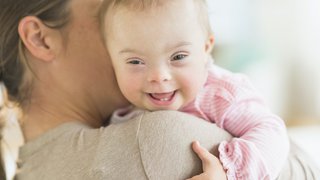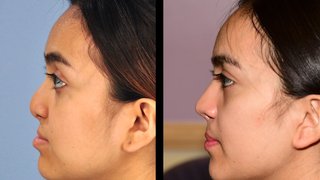Gene therapies for blood disorders give kids health and hope
January 15, 2025

For decades, the outlook for children with blood disorders has been grim. A diagnosis of beta thalassemia or sickle cell disease means monthly blood transfusions for life or a stem cell transplant from a compatible sibling, which can be very difficult to find and can be accompanied by significant side effects. These children endure frequent hospitalizations for pain crises and life-shortening symptoms that rob them of their childhood.
But now, for the first time, advances in gene therapy are offering children and their families hope – not just for symptom management but for a cure.
The Pediatric Gene Therapy Program at Children’s Health is one of only a few qualified treatment centers in Texas and among several dozen in the U.S. to offer children with these blood disorders the option of new ex vivo gene therapies – in which a patient’s own stem cells are retrieved, modified, and returned to their body.
Pediatric blood cancer experts from UT Southwestern Harold C. Simmons Comprehensive Cancer Center have partnered with Children’s Health to provide stem cell transplantation and access to these novel therapies before they are widely available to the public.
Zynteglo and Lyfgenia work by modifying the mutated gene that affects hemoglobin, the protein in red blood cells that contains iron and helps oxygenate the body. Treating these hemoglobin disorders is a complicated process:
- Millions of stem cells are taken from the patient’s bone marrow.
- They are sent to a laboratory, where a non-mutated gene is inserted into the stem cells’ DNA using a harmless virus as a delivery mechanism.
- The modified gene is positioned near the gene that caused the malfunctioning hemoglobin.
- The patient receives a dose of chemotherapy, and the modified stem cells are transplanted back into their bone marrow.
Over several weeks, the patient’s body accepts the new cells, which begin creating non-mutated proteins. As these new cells produce healthy hemoglobin, the mutated cells become outnumbered, and symptoms are relieved.
The first pediatric patient in North Texas to receive Zynteglo was treated for beta thalassemia at Children’s Health in 2024 and has responded well to treatment.
For some children, these treatments can cure their genetic blood disorder. However, there is a risk of serious side effects. Patients need careful monitoring from specialists during treatment and regular follow-up for life.
Today, advanced gene therapies for blood disorders are currently available for children with beta thalassemia or sickle cell disease and no history of other major health conditions, such as stroke.

How it works
Children with certain blood disorders may be eligible for ex vivo gene therapy, which involves retrieving the patient’s stem cells, removing the genetic mutation, and then transplanting the stem cells back into the patient. Learn more about how these treatments work.
How does beta thalassemia therapy work?
Beta thalassemia is a rare blood disorder in which a genetic mutation reduces the production of hemoglobin. This can cause weakness, fatigue, pale skin, and serious complications such as an increased risk of blood clots.
Symptoms of beta thalassemia major, the most severe form, usually appear in the first two years of life:
- Failure to grow as expected
- Yellowing of the skin and eyes (jaundice)
- Enlarged bones and organs such as the spleen, liver, or heart
Historically, treatments have been reactive and focused on symptom management. Children get frequent blood transfusions to rebuild their supply of red blood cells. Over time, this can lead to a buildup of iron in the body, which can cause life-limiting problems with hormones, the heart, and the liver. Most people with the severe form of beta thalassemia die before age 30.
A bone marrow transplant has also been used as a treatment. Sibling donors have the best chance of success, but less than 25% of siblings are a perfect match. The new gene therapy, Zynteglo, aims to correct the genetic mutation at the source.
Zynteglo uses a patient’s modified stem cells to correct the mutation, restore normal hemoglobin production, and stop repeated transfusions. In phase three clinical trials, 89% of people treated with the medication had stopped transfusions and achieved a near-normal level of hemoglobin within two years.
The most common side effects of this treatment are abdominal pains on the day of transfusion, low levels of platelets and white blood cells, and increased risk of bleeding and infection in the six months after treatment. There is a possible risk of developing leukemia, a type of blood cancer, while taking this medication. However, no cases were seen in the clinical studies for Zynteglo. Patients should be checked for blood cancer at least annually for 15 years after a Zynteglo infusion.
The medication is approved by the Food and Drug Administration [MT5] (FDA) for children and adults with beta thalassemia who need regular red blood transfusions.
Related reading: The ABCs of hemoglobin disorders and pregnancy
How does sickle cell disease therapy work?
Sickle cell disease is an inherited gene mutation that causes hemoglobin to form stiff rods, which change the shape of red blood cells from a flexible frisbee to a hard sickle. In the U.S., Black communities are most affected, with about one in 365 Black people born with sickle cell disease.

Sickle cells live only 10-20 days instead of the typical 90-120 days; they tend to burst and can stick to the walls of blood vessels, slowing or stopping blood flow. This causes sudden, severe pain crises that lead to frequent hospitalization. Other symptoms can include:
- Pain from swelling of the feet and hands
- Fatigue
- Jaundice
Until recently, the only treatment was an allogeneic stem cell transplant, in which someone else’s stem cells are transplanted into the patient. But the chances of finding a perfect genetic match donor are low, and the risk of the patient’s body rejecting the transplant, called graft-versus-host disease (GVHD), are high.
Lyfgenia is a new treatment in which a patient’s own stem cells are extracted, modified, and transplanted back into their body to reduce the chances of graft-versus-host disease. Over time, the patient’s body accepts the new bone marrow stem cells and begins producing hemoglobin that doesn’t sickle.
As long as the healthy red blood cells outnumber the sickled cells, symptoms of this debilitating disease can be relieved. In clinical trials, 94% of patients did not experience severe pain crises after Lyfgenia – and 88% had no pain crises at all – 18 months after receiving the therapy. Common side effects can include low blood pressure and hot flashes on the day of treatment. This medication is FDA-approved for patients 12 and older with sickle cell disease.
Some families are hesitant to try gene therapies. So, our teams offer town hall sessions to meet with the community and help people learn more about our Pediatric Gene Therapy Program. The turnout has been excellent, and we’ve been able to answer important, thoughtful questions from our neighbors.
Related reading: Khadence uses superhero strength to fight sickle cell

Q&A session
The Pauline Allen Gill Center for Cancer and Blood Disorders hosted a Q&A session with Andrew Koh, M.D., Professor of Pediatrics at UT Southwestern, to provide more information about the gene therapies, including the treatment process, eligibility, and side effects.
Ex vivo gene therapies are still very expensive, since they are so new to the market. However, many private insurance carriers have been willing to cover gene therapies, and public insurers may cover them in the future.
Today’s gene therapies for treating blood disorders are just the tip of the iceberg. In the future, technologies such as CRISPR may enable precise gene editing that could provide life-saving treatment for children and adults.
Children with beta thalassemia and sickle cell disease now have hope for longer, healthier lives with ex vivo gene therapy. It is our mission to bring these advanced treatments to more families in North Texas, relieving pain and giving children back the chance to just be kids, pain-free.
Related reading: Closing in on a cure for Duchenne muscular dystrophy with CRISPR
Gene therapy for neurological conditions
ALD symptoms
Symptoms of severe cerebral ALD can include:
- Aggressive behavior
- Behavior problems
- Difficulty reading and writing
- Difficulty swallowing
- Hearing trouble
- Memory concerns
- Poor coordination
- Problems with speaking
- Seizures
- Vision problems
Beta thalassemia and sickle cell disease aren’t the only conditions that have new treatments that employ ex vivo gene therapy. It is also being used to help patients with certain neurological conditions.
Cerebral adrenoleukodystrophy
The Pediatric Gene Therapy Program at Children’s Health in partnership with UT Southwestern also offers treatment for cerebral adrenoleukodystrophy (ALD), a severe genetic disorder that affects mostly males. This brain disorder destroys myelin, the fatty protective layer around the nerve cells that let us move and think.
Severe cerebral ALD appears in boys between ages 2 and 10. If left untreated, cerebral ALD can lead to neurologic devastation and death. If it’s identified when before symptoms begin or when they are mild, a bone marrow transplant can stop symptoms from getting worse. Infants are screened for cerebral ALD as part of the newborn screening.
Since 2023, Skysona has been available to patients at Children’s Health. Clinical trials showed that Skysona is safe and effective. Researchers found that 72% of symptomatic cerebral ALD patients treated with this gene therapy experienced major functional disability-free survival, while only 43% of patients who did not receive the treatment could say the same.
While no patients in the Skysona trials experienced graft-versus-host disease, the therapy can cause serious side effects such as nausea, vomiting, and increased risk of infection and blood or bone marrow cancer.
To talk with an expert about gene therapy, call 214-645-8300 or request an appointment online.











